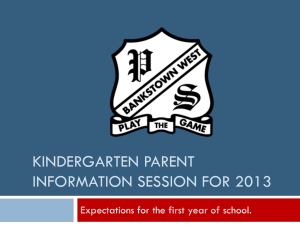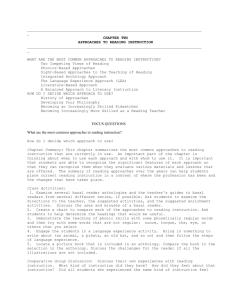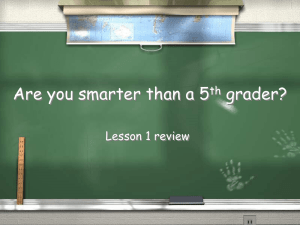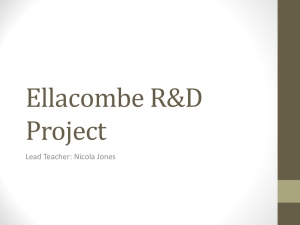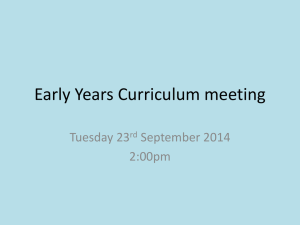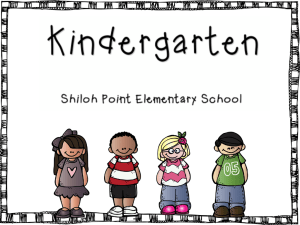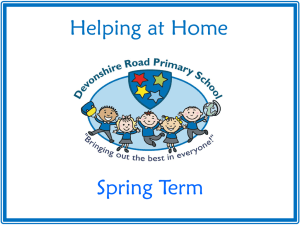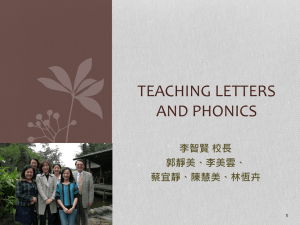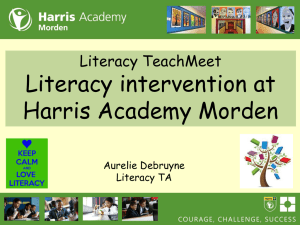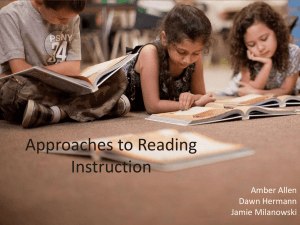File - shaunihunter.us
advertisement
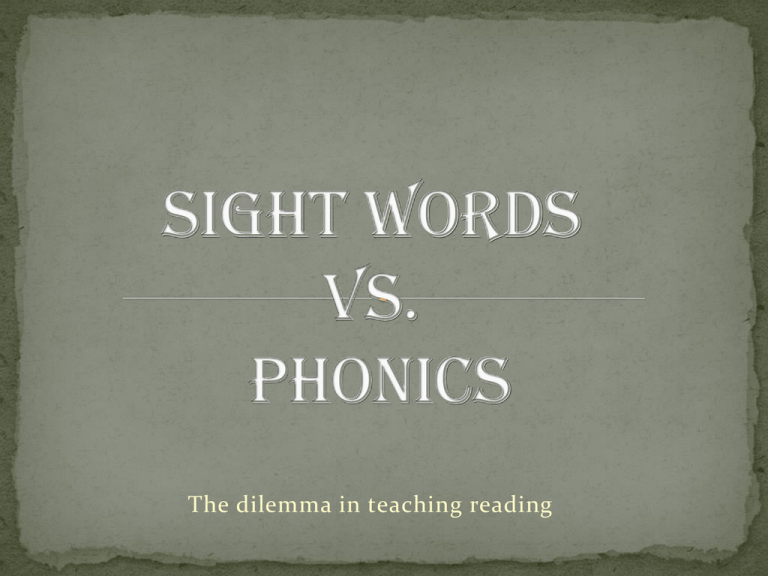
The dilemma in teaching reading Question: Is one type of learning better than the next in regards to Reading and Literacy? Claim: it would seem to me regardless of other opinion that phonics is the more advanced route than learning through sight words, it may not be the safest, but I believe it would deliver the best results. At the beginning of the Twentieth Century, the Progressive Education Movement pushed for instruction that focused more on the interests of students and what science was discovering about teaching and learning. More and more stories were included in reading textbooks that emphasized particular sounds or other targeted reading skills. These stories with controlled vocabularies were often of little interest to students and did not include ethnic minority characters. In the 1950’s scott foresman wrote "Dick and Jane" which was a childrens picture book. Foresman used a "whole word" approach to teaching reading where words were repeated on each page enough times that, according to behavioral research, students could remember them by saying and seeing them numerous times. Phonics advocates focus their efforts on the primary grades OF EDUCATION and the importance of students being able to sound out words based on how they are spelled WHEN THEY ARE READING THEM RATHER THAN RECOGNIZING THE WORD OUT OF MEMORY. A problem with English is that it does not have a one-to-one sound relationship that would make reading much easier. The many homonyms in English such as “to”, “too”, and “two” create difficulties for students, even at the university level in regards to spelling. tHe woRDs “AFFeCt” AnD “eFFeCt” ARe CoMMonlY MisspelleD Along ADULTS AS WELL AS CHILDREN. Phonics is considered a "bottom up" approach where students "decode" the meaning of a text. The advantage of phonics, especially for students who come to schools with large vocabularies, is that once students get the basics down, they can go to the library and read a wide variety of children's literature. With whole language reading otherwise known as sight word reading, teachers of our primary school ages are expected to provide a literacy rich environment for their students and to combine speaking, listening, reading, and writing. Whole language teachers emphasize the meaning of texts over the sounds of letters, and phonics instruction becomes just one component of the whole language classroom. While this is the widest spread type of reading curriculum in the united states today, we have to wonder if it is the most effective. Whole language is considered a "top down" approach where the reader constructs a personal meaning for a text based on using their prior knowledge to interpret the meaning of what they are reading. Problems associated with whole language include a lack of structure that has been traditionally supplied by the scope and sequence, lessons and activities, and extensive graded literature found in basal readers or reading text books. Whole language puts a heavy burden on teachers to develop their own curriculum, as the concepts to teaching whole language is repetition it then requires the teacher to introduce and encourage a large amount of sight words into his/her curriculum through out the grade year. The problem with just one type of reading being taught in schools is that students all learn differently. The various different ways and approaches to learning to read is dependent on the individual learning and their direct personality. Phonics learning is heavily associated with Behavioralists and their methods of teaching. The Behavioral learning methods are based on studies of animal behaviors where animals such as pigeons learned to do tasks when they received rewards and stopped behaviors that were not rewarded or were punished. Harvard psychologist B.F. skinneR sAiD tHAt: “Most of us can point to things we continue to do because we are rewarded for doing them. Rewards can be the pay we get for jobs we do, desired recognition like "A" grades for doing excellent school work, and praise from our friends when they like what we are doing. Likewise, we can point to things we stopped doing because we were not rewarded or were punished for them. Behaviorist learning theory tends to look at extrinsic rewards like money, grades, and gold stars rather than intrinsic rewards like feeling good about successfully accomplishing a difficult task. Sight word reading and learning is based on the constructivist learning theory that is based on the idea that children learn from connecting new knowledge to previously learned knowledge. Russian psychologist Lev Vygotsky introduced the concept of sight words also known as whole language learning. Vygotsky sAiD tHAt “. If children cannot connect new knowledge to old knowledge in a meaningful way, they may with difficulty memorize it (rote learning), but they will not have a real understanding of what they are learning. “ Vygotsky identified a "zone of proximal" development where children can learn new things that are a little above their current understanding with the help of more knowledgeable peers or adults. This new knowledge is incorporated into their existing knowledge base. LEARNG THEORIES COMPARED Behaviorism (Official Phonics Theory) •Teacher centered Direct Instruction •Transmission (Paulo FReieR’s Model) •Phonics Emphasis •Sound and Skill Emphasis Constructivism (Sight Word Theory) •Student Centered Instruction •Experiential Interactive •Sight Word Emphasis •Meaning Emphasis When teaching reading there are several influences to consider such as: Literacy level when entering school – 5% of children can read upon entering kindergarten, this comes from HigH liteRACY involveMent in tHe CHilD’s HoMe. Children who are multi lingual in the home and upon entering school tend to have a lower literacty and reading capacity upon entering school Another issue to consider in teaching reading is the brain development in children. Some children can not learn to read until roughly 7 years old depending on their cognitive development level. The No Child Left Behind (NCLB) Act of 2001 through its Reading First provisions attempts to improve reading instruction in American schools and close the gap in test scores between ethnic minorities and mainstream "white" Americans. This has caused a push in the Sight Word curriculum. Educator believe that rather than introducing and focusing on both learning concepts that Sight Words can be taught to anyone tHRougH Repetition. AltHougH tHis Doesn’t Allow CHilDRen witH high literacy levels to continue development further, it does allow an even playing field in the classroom and less one on one attention from a teach to learn. This is an issue that would have to be individualized by the teacher and also by the student. A perfect curriculm would include both concepts of teaching and teacher and student centered learning. Each child would have to be taught more in one area than the other or an equal balance dependent on their development. While this would take more time and structure in a classroom the overall results could be substantial. When we say No Child Left Behind, I think we also need to focus on No Child Being Held Back.

